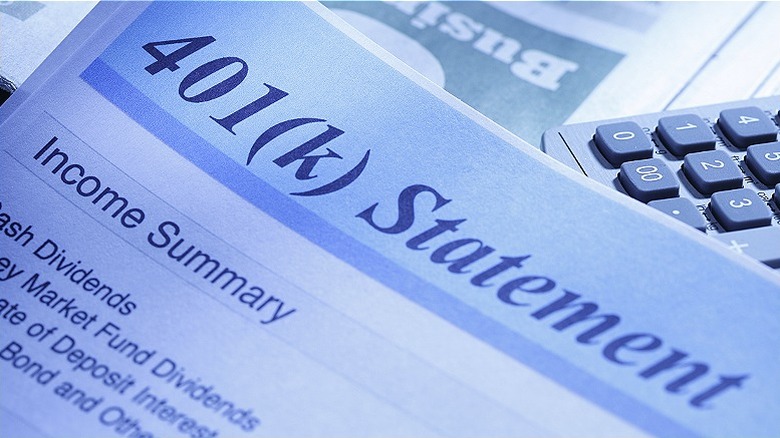How 401(k) Fees Could Be Setting You Back For Retirement
There's a LOT to know about 401(k) plans. From what constitutes a good rate of return on a 401(k) to the ins and outs of employer contributions, it can feel complicated, not to mention overwhelming. Whether you are new to having a 401(k) or you are hoping to further your knowledge base for your existing account, there's a lot to learn about hitting your financial retirement goals. While you might know how market volatility and keeping a diversified portfolio can affect 401(k) returns, you might not be aware of how many fees are associated with your account. In fact, according to a 2021 report from the United States Government Accountability Office, almost 40% of 401(k) users do not fully understand their 401(k) fees, even though the Department of Labor requires these plans to provide detailed fee disclosures.
For those who might not already know, 401(k) plans come with a variety of fees. These fees can't only add up fast, but when you consider they're part of a long-term account tied to your retirement, they can ultimately be hurting your financial future. What makes them especially tricky is that these 401(k) fees aren't always made obvious to you as an investor — even though knowing what you're being charged can and should be a crucial part of your long-term planning. According to the Center for American Progress, the average annual fee for a 401(k) account is 1%, however, fees can range from 0.5% to 2%.
What are 401(k) fees for?
There's a lot of work, planning, and regular maintenance that goes into managing a 401(k). From administrative services to communications with plan participants to compliance services to the actual investment management, 401(k) accounts require a lot of manpower — and hours — to successfully operate. Now, your 401(k) plan's fees generally come from two sources: your plan provider (and/or administrator) and the individual funds within the plan. The plan provider fees associated with your 401(k) account are the ones generally meant to cover all of the various day-to-day services listed above that surround the actual management of the account.
While your plan's specific provider fees are generally set, your individual fees can vary. This can make it especially important to read the fine print when choosing fund(s) for your 401(k). Look for line items like total asset-based fees, total operating expenses (look for a percentage), and expense ratios when assessing potential fees for a new fund or to get a better idea of your current 401(k) fees. Other fees like investment fees are assessed as a percentage of your total assets invested, and these fees are automatically deducted from your returns. Making sure you know the rate of these particular fees can be especially important when tracking returns. There are also individual service fees, which are charged to only those specific participants who use select services. These special services can include taking a loan from the plan or even receiving and executing investment directions.
Can I change my 401(k) fees?
For starters, plan fees can vary quite a bit depending on not only the size of your employer's 401(k) plan but also the number of overall participants and even the plan provider. As an individual investor (i.e., participant) in a 401(k) plan, you don't have much authority to change or negotiate your plan's fees (outside of bringing it up with your employer in the hopes they might change providers). With that in mind, it's important to realize that large plans with over $100 million in assets almost always have fees that fall below 1%, with some of the biggest plans falling below 0.5%. However, smaller plans falling below $100 million in assets tend to have higher associated fees, ranging between 1.5% to 2% or over 2% for plans with less than $50 million in assets.
Now, while you might not have much of a choice regarding your provider, you do have choices within the plan available to you. Depending on what kinds of funds you might choose as part of your investment portfolio, you have the ability to choose plans that have lower overall expense ratios than others. According to Department of Labor requirements, all potential plans and funds must provide a detailed prospectus that lays out any/all fees and fund expense ratios. These expense ratios are the sum of all of the detailed fees included, usually expressed as an annual percentage. Comparing these ratios can help you choose individual funds that might ultimately cost you less (while earning you more), especially in the long term.


